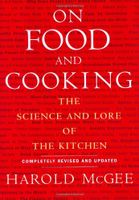Label
All
0
Clear all filters
🌷 Spring savings – save 25% on ckbk Premium Membership with code SPRING25
The Effects of Heat
Appears in
By Harold McGee
Published 2004
Heating cabbages and their friends has two different effects. Initially the temperature rise within the tissue speeds the enzyme activity and flavor generation, with maximum activity at around 140°F/60°C. The enzymes stop working altogether somewhere short of the boiling point. If the enzymes are quickly inactivated by plunging the vegetables into abundant boiling water, then many of the flavor precursor molecules will be left intact. This isn’t always desirable: cooking some mustard greens quickly, for example, minimizes their hot pungency but preserves the intense bitterness of their pungency precursors. Boiling in a large excess of water leaches flavor molecules out into the water, and produces a milder flavor than does stir-frying or steaming. If the cooking period is prolonged, then the constant heat gradually transforms the flavor molecules. Eventually the sulfur compounds end up forming trisulfides, which accumulate and are mainly responsible for the strong and lingering smell of overcooked cabbage. Prolonged cooking makes members of the onion family more sweet and mellow, but the cabbage family gets more overbearing and unpleasant.
Become a Premium Member to access this page
Unlimited, ad-free access to hundreds of the world’s best cookbooks
Over 150,000 recipes with thousands more added every month
Recommended by leading chefs and food writers
Powerful search filters to match your tastes
Create collections and add reviews or private notes to any recipe
Swipe to browse each cookbook from cover-to-cover
Manage your subscription via the My Membership page
Best value
Part of
Advertisement
Related Recipes
-
-
-
-
Related Reference
-
-
-
-
Advertisement
The licensor does not allow printing of this title



